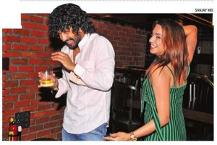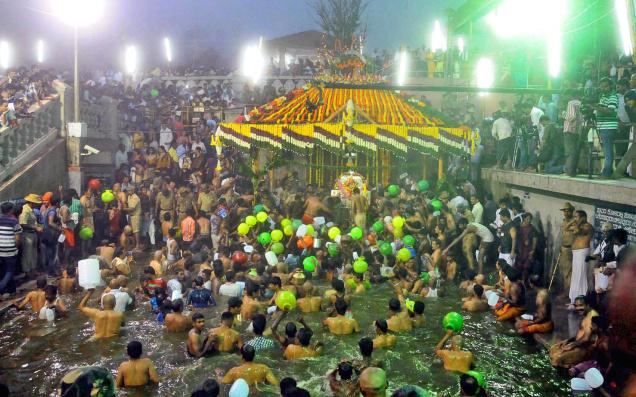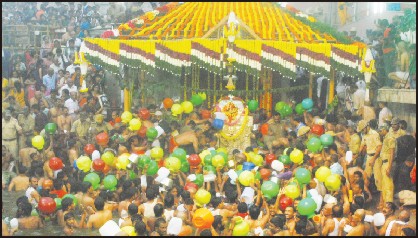Victoria: A Life by AN Wilson is a book that chronicles Queen Victoria’s life. An excerpt from the book essays her role as a godmother of an Indian princess named Gouramma
Ten days after they heard the news of the Charge of the Light Brigade, it was the Princess Royal’s fourteenth birthday….The Queen spent the day quietly with the children and’sketched Gouramma’. This was her god-daughter, the Princess Gouramma, now Victoria Gouramma, of Coorg. Her father, the deposed rajah, driven from his lands in Southern India, had for a while resided at Benares. In 1852, the rajah brought Gouramma, then aged eleven, to London and offered her to the Queen for adoption if the Queen would take charge of my daughter & treating her with honour and kindness grant her an education complete in every respect & suitable to her rank, and bring her up according to English customs in the Christian faith’. It was a tall order, but the Queen always felt sheepish about the deposed Indian maharajahs whose wealth had been seized by the East India Company. At first she replied to the rajah that ‘it would not be in accordance with the usages of this Country that Her Majesty should take the charge of his daughter’. The India Board offered to pay for the upbringing of the child and to pay him a stipend while she was in England. Prince Albert suggested giving the rajah £40 per month for the child, and the rajah’s response was that ‘your Majesty has been graciously pleased to grant me much more than I prayed for with regard to my little daughter’. It was suggested that the child be made a ward in chancery of Sir James West Hogg, baronet, chairman of the East India Company. This was not quite what the rajah had in mind. He felt that a ‘lady of rank’ should be found to look after the child. Moreover, the little girl was staying with her father in an hotel. The culture shock was mighty. He complained of’people lurking in the passages to see her’, and threatened that if she were further humiliated’, he would have no alternative but to put her to death.
The background was as painful as any colonial story could be. On the one hand, the Rajah of Coorg was getting a very poor deal from the East India Company. He had provided the British with’many thousands’ of his own subjects, to act as coolies for the Bombay army; he had supplied ‘upwards of 3,000 pack bullocks… 40,000 bottles of rice, 5 elephants, and 3,000 sheep. For all these supplies the Raja received no pecuniary indemnification.’
There could be no doubt that the rajah had been swindled by the Company. On the other hand, he was no saint. Evidence had been collected of atrocities perpetrated under his regime. Lord William Bentinck had decided, as far back as 1834, that’the interests of humanity’would be served by removing a man who, though open and friendly in his manner and a skilled horseman, performed such cruelties as forcing his subjects to act as human stockades around wild elephants during his hunting expeditions. Any who let the elephants escape were put to death….
The Queen agreed to stand godmother to the child, who was baptized by Sumner, the Crumpet, in the chapel at Buckingham Palace on 1 July 1852. It was no hole-in-corner affair. Lord John Russell’s clergyman half-brother, Lord Wriothsley Russell, and Dean Gerald Wellesley, the nephew of the Duke of Wellington, assisted. The princess was, in effect, adopted by an Indian army couple, Major and Mrs Drummond, who took her riding, read her Gulliver’s Travels and tried to make her have the enthusiasms of an upper-class Scottish aristocrat. To some extent they succeeded, but Princess Victoria Gouramma was neither a demure nor a healthy person. Coquettish from the moment of her arrival in Britain, by the time she was sixteen the Drummonds found her as interested in stable boys as in ponies, more than once finding her wrapped in the arms of a groom. At the Juvenile Ball held at Buckingham Palace in April 1856, Gouramma danced merrily with the boys, and clearly attracted the Prince of Wales, but this was the first time she began to cough blood.
The Queen…never lost her affection for the Indian princess, however much of a scamp she was. For a confirmation present, she gave her a coral and diamond necklace, hoping ‘that these ornaments, instead of gratifying the vanity of the young Princess, may serve, when she looks at them, to remind her of the high duties and responsibilities which she has taken upon her’. The hope was a little optimistic. Some time in 1859, her father gave her a bag of jewels, before expiring and being buried in Kensal Green. The Drummonds, slightly unable to cope with the princess’s latest attachment (to an under-butler), applied to the Queen, who was entirely unshocked by the girl’s amorous propensities and merely recommended that they take her on a continental tour.
Gouramma was not the only Indian child in whom the Queen took an interest. In 1854, the Maharajah Duleep Singh, the Lion of Punjab, had arrived in England. He was a charming boy, as Hardinge had observed when bringing the Kingdom of the Punjab to an end, at the close of the last Sikh wars in 1850, and appropriating Duleep Singh’s greatest treasure, the Koh-i-Noor, which means ‘Mountain of Light’….
The Queen’s hope was that Gouramma would marry her new protege?, but Duleep, at this stage at any rate, was too strait- laced for her, and when the pair were introduced, at Lord Normanby’s seat of Mulgrave Castle, it was not a success. At that house party, however, Singh introduced her to a Thackeravian roue?called Colonel John Campbell. Meanwhile, the diligent Drummonds pursued an unsuccessful legal case against the East India Company to restore the maharajah’s appropriated property. A child was born to the marriage, but it was not a happy union. Princess Gouramma died of consumption, in not very salubrious lodgings in Jermyn Street.
Colonel Campbell was seen slipping out of the house carrying a bag, presumably of the maharajah’s jewels. The Queen kept up with the daughter, whose name was Edith.
(Published with permission from the publishers)
source: http://www.dnaindia.com / DNA / Home> Lifestyle / Agency:DNA, Place:Mumbai / Sunday, October 19th, 2014




